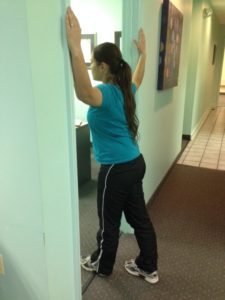Check out this video on exercises to decrease tension in your neck muscles.
About amacht
ITB Syndrome
Iliotibial Band Syndrome is pain at the outer part of the knee, thigh or hip. It is usually caused by overuse and it is often seen in runners. Other causes may be from excessive pronation of the foot, tight buttock muscles, poor running form, bowed legs or a leg length discrepancy. If you have pain at the outer part of your leg and it continues with daily activities and running, you need to consult a physical therapist.
How to Perform a Squat Correctly
Check out the below video on how to squat:
IT Band Foam Rolling Video
Check out the video below on Foam Rolling the IT Band. Please note, you first roll the whole length of the IT Band to determine what part of the muscle is tight. Once you find tight areas within the muscle, you concentrate on those areas by performing small rolling or sustained pressure over the area. Spend no more than 2 minutes on each area of tightness.
Will Abdominal Crunches tone my Stomach?
Abdominal crunches only focus on your rectus abdominus (6-pack muscle). In addition to performing crunching exercises, you should focus on strengthening your core muscles. These muscles surround your rectus abdominus and connect to your back musculature. To truly tone your stomach muscles, you need to address more than your 6-pack.
An example of a good core strengthening exercise is to lie on your back and lift your knees to a 90/90 position. Lower one leg to tap your foot on the surface then bring the leg
back up. Alternate lowering each leg and tapping each foot on the surface.
Perform this exercise for 10 reps. Progress to 2 sets of 10, then 3 sets
of ten.
Check out the video below for a demonstration of this exercise by Dr. Amanda Macht
Lumbar Stabilization Exercise- Table Top Taps
Are you spending too many hours on your computer? Having Neck Pain?
If you are getting neck pain from sitting at your computer all day. Check out this video that shows you a stretch for your upper trapezius muscle.
How to perform a squat correctly
The most important thing when performing a squat is to protect your knees and back with proper form. Watch the video below to learn how to perform a squat with proper form.
Plantar Fasciitis
Does the arch of your foot hurt when you begin to walk first thing in the morning? Plantar fascitis is a condition of foot or heal pain that is caused by tightness in the fascia (connective tissue) on the bottom of the foot. To help alleviate the discomfort, try rolling a tennis ball under your foot. Check out this video for a demonstration.
Treatment for Plantar Fasciitis
Sitting Long Term and Stretching
Do you sit in front of the computer most of the day? Do you get tension headaches, neck pain, and sore chest muscles?
This is a result of repetitive forward head movement that can be from typing, reading and looking down to write. Excessive forward head posture puts strain on your neck and shoulder muscles. Perform the pectoralis stretch below to decrease strain to your neck and shoulder muscles.
Stand in a doorway and place your arms about 90 degrees along the sides of the door frame. Step through the door frame until you feel a stretch across your chest. Hold the stretch for 20 seconds. Alternate your foot forward with each stretch.

Do You Suffer From Calf Cramps?
Calf cramps come from tight muscle. The calf muscles can get tight from running, excessive walking, wearing high heels, and poor shoe support. If your calves are tight, begin a stretching program. In the following video, you will learn several ways to stretch your calves. Please note, you can hold the stretch for as little as 15 seconds for 2-3 repetitions to obtain results.
